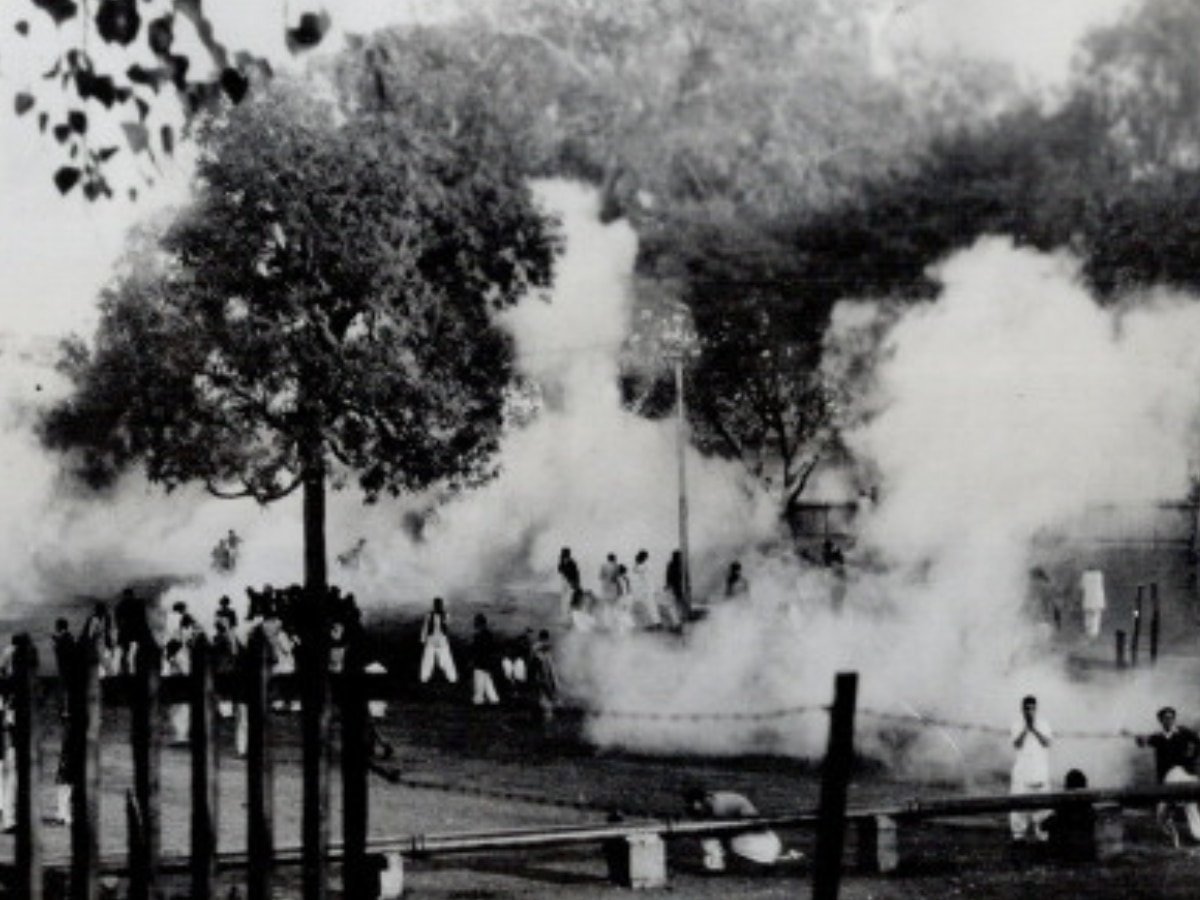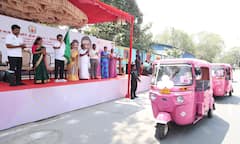West Bengal Foundation Day: An Almost Forgotten Yet Immensely Significant Statehood
From once being obedient towards the British to being divided twice, West Bengal's statehood is significant in understanding the story of Bengal and its past.

New Delhi, Kolkata: West Bengal, as we see it today as a state that has captured the attention of the country politically, has not always been the same. The face of Bengal and its stories have gone through rigorous changes. Bengal is often spoken of now for its culture, Durga Pujo, 'gram bangla' and 'bhradralok', apart from the ‘Didi-driven' politics. From once having the capital city of the country to being often mocked as a state with stunted growth, development or ambition, West Bengal has had a long and diverse past that offers a lot to learn about.
Much before the partition of Bengal, along with that of India in 1947, Bengal was sought to be divided in 1905 as part of the British reorganisation of the Bengal Presidency. Why it was done and what happened was significant as the impression of Bengal changed from then onwards.
However, before we move on to the 1905 partition by the British, here's a look at what happened on June 20, 1947, which makes this day significant.
The Meeting Held On June 20, And Partition Of Bengal
The partition of Bengal was imminent as London had already decreed that the Bengal Legislation had to be divided into two parts based on the Hindu-Muslim demography.
"Importantly, London had made one thing very clear – if a majority in either section voted in favour of partition, then Bengal would be divided. So it was a given fact that Bengal would be divided if one section voted in favour," said oral historian Avishek Biswas, who is an Assistant Professor at Vidyasagar College, affiliated to Calcutta University, while speaking to ABP Live.
Also read: 'Will Rekindle Bitter Memories': CM Mamata Protests Governor's Event To Mark Bengal Foundation Day
It was on this date, back in 1947, that the Legislative Assembly of Undivided Bengal met and ultimately took a decision which would have a tremendous impact on the future unfolding of events and decide the fate of the people living in Bengal at that time.
"The Bengal Legislative Assembly held this meeting to decide if the Bengal Presidency would stay united with Pakistan or with India, or be divided having the Hindu majority districts staying with India as West Bengal and the Muslim majority areas forming East Pakistan," said Professor Sujata Mukherjee of Rabindra Bharati University.
"After several hours of debate and deliberation, the Bengal Legislative Council and the Bengal Legislative Assembly voted on the Partition of Bengal along religious lines into two separate entities: the western part that went to the Dominion of India was named West Bengal, while the eastern part went to the Dominion of Pakistan as a province called East Bengal (later renamed East Pakistan in 1956), which became the independent nation of Bangladesh in 1971," she added.
However, Biswas said, the meeting held on the same day on the East Bengal side also needs to be looked at. "The other part voted in favour of a united Bengal. The Muslims wanted to have a unified Bengal because if Bengal was united they would have an upper hand over the entire Bengal. And to avoid this, the voting was done in favour of partition in the West Bengal assembly — predominantly controlled by Caste Hindu leaders across political lines. Everybody wanted partition even if their reasons were different."
After the partition of Bengal, many other districts were subsequently added to the state of Bengal.
In 1950, Professor Sujata said, the Princely State of Cooch Behar was merged with West Bengal and in 1955, the former French enclave of Chandannagar, which had passed into Indian control after 1950, was integrated into West Bengal. Additionally, portions of Bihar were also subsequently merged with West Bengal.

Reason For The June 20 Decision
So why did Bengal vote for partition?
Biswas said: "This decision was more political and it was taken by the powerful Caste Hindu leaders, most of whom belonged to the Congress. They understood that if Bengal did not come under the jurisdiction of India, it would be very problematic for the Hindu people because the other part was Muslim dominated."
He said this day was the culmination point of something that began on June 3, 1946. "On June 3, Mountbatten had already decreed that Bengal had to set up a separation council to be headed by Frederick Burrows, the Governor of Bengal at that time, and assisted by four members — two from the Muslim League and two from the Congress. The separation council began its task on June 26 and June 20, making everything clear in black and white. Partition was a foregone conclusion by June 20 because everybody knew what the Hindus would vote for."
Professor Sujata said, "After it became apparent that the division of India on the basis of the two-nation theory almost certainly will result in the partition of Bengal along religious lines, the Bengal Provincial Muslim League leader HS Suhrawardy came up with a new plan to create an independent Bengal state, which would join neither Pakistan nor India but remain unpartitioned."
She added: "The Bengal Provincial Muslim League leadership’s opinion was divided. From the Congress, only a handful of leaders agreed to the plan, such as the influential Bengal provincial Congress leader Sarat Chandra Bose, who was the elder brother of Netaji, and Kiran Shankar Roy. However, most other leaders as well as Congress leaders, including Jawaharlal Nehru and Vallabhbhai Patel rejected the plan. The Hindu Mahasabha under the leadership of Shyama Prasad Mukherjee vehemently opposed it. The lack of any other significant support caused the United Bengal plan to be discarded."

Significance And Relevance Of Bengal Formation Day
Speaking on the significance and relevance of the Bengal Formation Day in 2023, Biswas said not much was spoken of the formation of Bengal aside from its relation to India's partition. "We don't talk about the formation of Bengal after partition as we talk about Punjab. Bengal has always been very culture-centric but we haven't discussed the clear facts. We haven't talked about Bengal as we should. Bengal possibly suffered a deeper and longer partition than Punjab and we are still bearing the brunt of Partition till date, so we need to talk about that," he said.
Explaining the significance of Bengal's statehood, Professor Rajesh Das of Bardhaman University said: "Statehood gave a cultural identity to Bengal and enabled us to retain it. Culture, being a multifaceted concept includes the language, festival and ethnicity of Bengal. Bengal's rich history, political background and cultural heritage — all of it got merged in 1947 with the declaration of statehood. Today we can practise our culture, celebrate festivals, and speak in our language without any restrictions. The only sad part is that it divided the people of Bengal on religious grounds."
1905 Partition Of Bengal, And Its Annulment
Prominent Indian leader Gopal Krishna Gokhale had said, "What Bengal thinks today, India thinks tomorrow", and this could be the motivation for Bengal's first partition that saw growing angst among educated Bengalis towards the British administration. Were they afraid that the resistance would spread as Bengal was the home to intellectuals and influential social leaders and writers like Vidyasagar, Ram Mohan Roy, and Rabindranath Tagore?
Bengal was partitioned for the first time by the British in 1905. The reason given by the English rulers at that time was that the division was needed to boost administrative efficiency. However, this attempt was seen as a move to divide the region along communal lines.
"When Bengal was divided for the first time in 1905, the British said the Bengal province was too big to be administered properly. However, the backstory was that for the entire 19th century, Bengali intelligentsia had been obedient towards the colonial rulers up to the end of the 19th century and the beginning of the 20th century, because they thought the Westernisation brought by the British was essential for the modernity of Bengal and India. But the beginning of the 20th century saw unemployment problems. The educated young Bengali did not get opportunities for employment and their obedience towards British rule started fading. The start of the 19th century saw a huge grievance, which led to extremist politics. The aggrieved youth started resistance politics against the British and that is when they realised the Bengali intelligentsia was getting aggrieved and should be broken as they were getting attracted towards anti-British politics," said Professor Alok Kumar Ghosh Of Kalyani University.
"That’s when they thought if there were two administrative centres — one in Dhaka and one in Calcutta — the Muslim-dominated areas could be separated from the Hindu-dominated areas and the issue could be tackled as the peasant class was mostly Muslims and the landed class was dominated by Hindus. So Bengal would be divided into a Muslim area and a Hindu area, which would help the colonial rulers to administer with ease. It is important to note the aggrieved people were mostly Hindus because most of the Muslims were not educated and the employment competition was being faced by the educated Hindus, so if the East was dominated by Muslims, who were mostly peasants, they would focus on agriculture. And if the employment issues were sorted, the anti-British feelings arising out of the lack of employment could also be mitigated. This division was a political move to weaken the grievance. This has been shown as communal politics in most history books but I think this was an attempt by the colonial people to socialise communalism," he added.
The Bengali intelligentsia ultimately started a movement for United Bengal but gained little popularity. It was a protest by those aggrieved with lack of employment — upper caste, wealthy, Hindu people. In the western part, it was this group that tried to start the Swadeshi movement, which weakened when the English temporarily annulled the Bengal division, Ghosh said, elaborating on the impact of the Bengali resistance against the British.
Capital Shifted To Delhi, A Move To Corner Bengal?
Even though the Bengal division was annulled by the British, the capital of India was shifted to Delhi from Calcutta in 1911. "At that point, the Swadeshi movement was growing and the protest of the Bengali intelligentsia was becoming more militant. When the capital was shifted, north Indian people got more involved with British politics, because of which Indian politics started getting more dominated by North India and became more Delhi-centric. The Bengali intelligentsia started getting more militant. The British continued their socialisation of communal politics. The British also tried to influence the Muslim peasant class to be more obedient to the colonial ruling structure. They knew they could not tackle the Bengali intelligentsia as they were aggrieved. So they tried to corner them by shifting the capital in a totally anti-Bengali move," he added.

Impact Of The Partition Of Bengal
The partition affected both West Bengal and East Bengal, economically
"Both West Bengal and East Bengal experienced large influxes of refugees during and after the partition in 1947. Refugee resettlement and related issues continued to play a significant role in the politics and socio-economic condition of the state," said Professor Sujata.

Talking about what would have been the scenario if Bengal was not partitioned, Professor Rajesh said: "Today, if Bengal was not divided and both East Bengal and West Bengal would have been one state, it could have emerged as one of the superpowers in Asia owing to the huge human resource it has. Human resource is the social capital of a state, which got divided into two parts as a result of the partition. The anthropological and ethnographic power in Bengal as a whole was huge, which maybe was a reason for the British to be afraid of."

The statehood of Bengal is the third oldest statehood and its foundation day is of great significance in the history of Bengal. In the words of Prof. Rajesh, "The day on which Bengal attained its statehood was a day of immense happiness, yet sorrow lingered around, because of the partition."
Trending News
Top Headlines










































